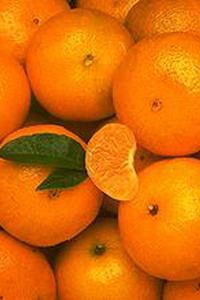Canons of awakening (part 2)
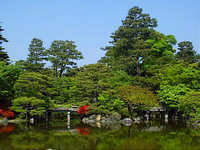 FLOWERING TIME
FLOWERING TIME
The canons of awakening In our time, everyone goes to the khans, but just like centuries ago, only when all things are completed. And just as in ancient times, the long-awaited spring for the Japanese is fleeting and limited to only one period of sakura blossom. With the beginning of flowering, forecasts are broadcast along with weather forecasts when the buds of the trees bloom in all areas of Japan. For this short period, the Japanese, no matter how busy he is, will surely make time to go out into the nature to admire the flowering trees. Few people now compose verses about the mortal nature of life under the falling sakura petals, but some companies gather under the canopy of flowering trees in whole departments for a kind of training: at a fun “breakfast on the grass” with colleagues and superiors it is much easier to get free and express your opinion if you were afraid to do it on work. Continue reading
Canons of awakening (part 1)
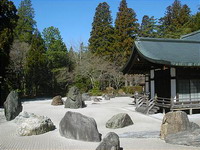 Despite the rather mild winters, with the exception of the northern island of Hokkaido, the onset of spring in Japan is expected throughout the country. In addition to the usual hormonal process that takes place in the body of every person at the time of the awakening of nature, psychological metamorphosis also occurs in the spring with the Japanese. And the reason for this is the millennial philosophical traditions and religious practices.
Despite the rather mild winters, with the exception of the northern island of Hokkaido, the onset of spring in Japan is expected throughout the country. In addition to the usual hormonal process that takes place in the body of every person at the time of the awakening of nature, psychological metamorphosis also occurs in the spring with the Japanese. And the reason for this is the millennial philosophical traditions and religious practices.
If it were possible to draw an analogy between the seasons and the estates of ancient Japan, I would probably liken summer to hardworking peasants and craftsmen, autumn to sad romantic samurai, leave winter to greedy merchants, and compare the colorful soft spring with a refined palace aristocracy. Continue reading
Japanese New Year (part 3)
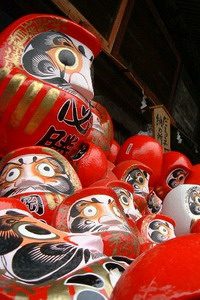 And NOW THE MOST PLEASANT – GIFTS
And NOW THE MOST PLEASANT – GIFTS
Interesting articles The first thing that comes to the Japanese mind: clay, paper, drawn, metal, plastic – any images and figures of the corresponding animal from the twelve-year zodiac cycle. In the case of 2006, an image of a dog guarding a house and driving thieves away.
Oddly enough, money comes second in the ritual scale of New Year’s values. Previously, they gave exclusively five-yen coins, since their name – goen – is harmonious with the word denoting strong family ties. But today you can’t buy anything for five yen, and therefore, as a rule, bills in a beautiful white envelope are attached to them. Continue reading
Japanese New Year (part 2)
 CAREFULLY PREPARE FOR ANCESTOR MEETING
CAREFULLY PREPARE FOR ANCESTOR MEETING
Interesting articles Over the course of history, in conditions of Japanese cramped conditions, a whole pine tree at the door turned into a bunch of its branches, with the addition of bamboo shoots. They have long been revered for their resistance to winds and ultra-fast growth, that is, those who celebrate again emphasize their desire to find new vital energy. The plum branches symbolizing the arrival of spring also got into the bouquet: the Japanese plum blossoms very early, when new snow can easily fall. We can say that through this plant the nation “learned” about the approach of the New Year and met it with indispensable poetic sessions. Representatives of all classes seated with cups at the roots of the tree and began:
Glitter of snow, purity of the moon, shining stars Continue reading
Japanese New Year (part 1)
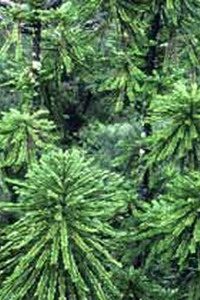 Until the distant now, 1873, Japan lived according to the Chinese lunar calendar. The favorite winter holiday of all children and adults was “moving” – each time it was a new day somewhere in late January or in the first half of February. However, the winds of change blew: under pressure from European powers and America, the country finally opened ports for free trade with foreigners. It became obvious that the difference in the time scales causes glaring inconvenience. And then the government voluntarily transferred the country to the solar calculation of days and months. At the same time, it was lost as much as thirty days: after the eleventh the first “moon” of the next year immediately arrived. The officials automatically lost their monthly salary – some were noisy, demanding to be issued nevertheless, but to no avail. Almost a century and a half has passed since then, and the Japanese have long been accustomed to celebrate the New Year at the same time as we, on January 1. Continue reading
Until the distant now, 1873, Japan lived according to the Chinese lunar calendar. The favorite winter holiday of all children and adults was “moving” – each time it was a new day somewhere in late January or in the first half of February. However, the winds of change blew: under pressure from European powers and America, the country finally opened ports for free trade with foreigners. It became obvious that the difference in the time scales causes glaring inconvenience. And then the government voluntarily transferred the country to the solar calculation of days and months. At the same time, it was lost as much as thirty days: after the eleventh the first “moon” of the next year immediately arrived. The officials automatically lost their monthly salary – some were noisy, demanding to be issued nevertheless, but to no avail. Almost a century and a half has passed since then, and the Japanese have long been accustomed to celebrate the New Year at the same time as we, on January 1. Continue reading

